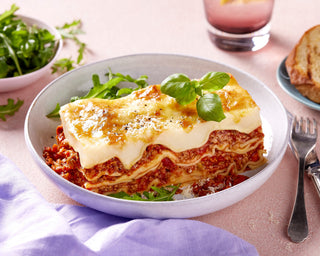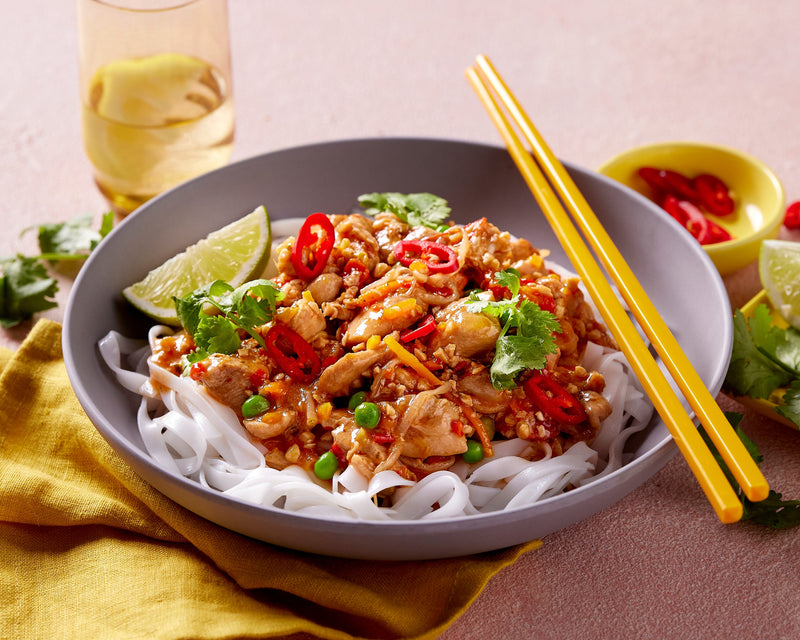
There are so many ways to add flavour to food, from the ingredients you put in right through to the way you choose to cook. Some ways to add flavour are healthier than others, and one of our absolute favourites is to add spices into a dish. They are nutrition power houses with few negative impacts to how healthy a meal can be, and they can pack a serious flavour punch that can take a meal from boring to bold in just a few pinches.
Spiced Versus Spicy
Sometimes you’ll see us talk about how our dishes are spiced but not spicy, but what does that mean? Dishes with spices in them can have a range of flavours, and it’s important to remember that just because something has spices in it, that does not mean that it will be spicy.
Most times if a dish is spicy it’s thanks to the addition of some variety of chilli or a particularly hot spice (think hot paprika). While we do love eating these, we use them sparingly or leave them out of most of our meals so you can adjust the spiciness levels to your liking
We only have a few meals that are spicy, but even those we keep the spice to a mild to medium level so that the flavour is enjoyable rather than blow-your-head-off or mouth numbing. If you do like meals that are a little spicy, try our Indian Vegetable Curry, it’s a new team favourite.
What makes spices so great?
Celebrated and used for their medicinal properties for hundreds of years before they started to be used in cooking, spices have numerous benefits for your health. On top of this, they are an easy way to add flavour to foods by adding only a small amount and with minimal effort required. They can be used for subtle flavour like adding cinnamon & sugar together to top a tea cake, or to add bold flavour to create something like a rich curry.
Our Favourite Spices
We used a lot of different spices in our kitchen… like a LOT, so picking a few favourites was harder than we originally thought. But we’ve managed to narrow it down to 3 that we use, eat, and love when thinking about flavour and health properties. Other favourites include garlic, ginger, cinnamon, cocoa and cardamom, but we could be here for hours, so let’s crack on!
PaprikaThis diverse spice comes in several forms from sweet to smoked, and a range of colours including red, orange & yellow.
Paprika contains nutrients and antioxidants such as vitamin E, beta carotene, lutein, and zeaxanthin. These have been shown to promote healthy vision, reduce inflammation, and promote healthy levels of cholesterol and raise levels of HDL (good) cholesterol.
It is a versatile spice that can be used in a range of ways and is often seen in rice dishes, stews and casseroles. They’re seen in cooking around the world including Spain, Hungary, and across the West Indies and South America. Personally, I love to sprinkle it on cauliflower & chickpeas before roasting them to form part of a chunky & delicious salad.
TurmericAn incredible spice that has gained massive popularity in recent years thanks to the unstoppable trend of golden lattes and their role in reminding people about turmeric’s undeniable health benefits, coming largely from the amount of curcumin it contains. Curcumin is a powerful antioxidant that fights oxidative damage (a key contributor to visible aging), strong anti-inflammatory properties, and it’s handy ability to help the body boost its own antioxidant enzymes.
Turmeric is what gives many curries their yellow colour and can be used in sweet or savoury dishes to add a beautiful flavour and depth. Alternatively, it can be used on its own or with other spices in blends.
Saffron
The rare, expensive and delicate spice that adds a beautiful fragrant layer of flavour to the dishes it is used in. Coming from the flower of the crocus plant, saffron is hand picked & dried making it the most expensive spice on earth.
Some of the key antioxidants found in saffron are Crocin, Crocetin, and Safranal. These have been found to have a range of benefits including having antidepressant properties, helping to protect brain cells against progressive damage, improve inflammation, reduce appetite, and aid weight loss (Crocin & Crocetin), and an ability to help improve your mood, memory, and learning ability, as well as protect your brain cells against oxidative stress (Safranal).
One thing to note with all spices is that the health benefits listed above are dependent on the amount you consume, but that does not make them less important to add to your diet. They pack a flavour punch without having to over-season food with extra salt or sugar and the health benefits are a bonus in our eyes.
Tell us in the comments what your favourite spice is & what else you’d like to read about on the blog!










